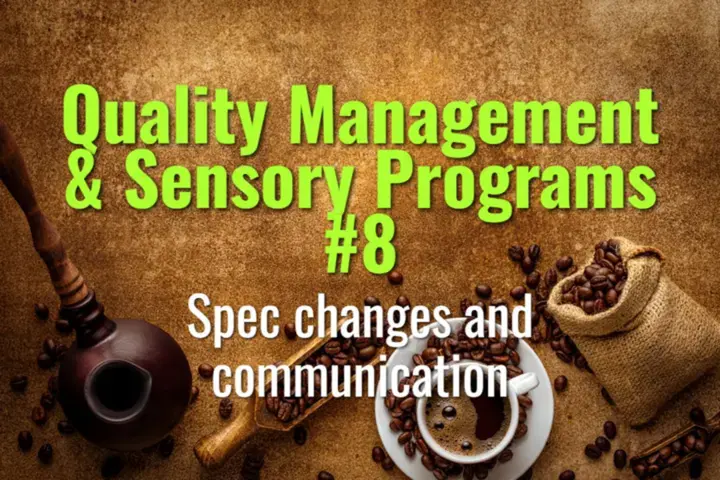Spec changes and communication
How to manage specification (spec) changes in coffee programs and communicate them clearly to suppliers, staff, and customers.
- Coffee Basics Nerds
- 2 min read
Article 8 of 12 in Quality Management & Sensory Programs/

Why Spec Changes Happen
- Green Coffee: Seasonal availability, lot substitutions, or climate-driven variation.
- Roast Profiles: Adjustments for new equipment, aging green stock, or flavor targets.
- Brew Recipes: Updates for new grinders, water chemistry, or menu changes.
Risks of Poor Communication
- Staff confusion → inconsistent service.
- Supplier misalignment → wrong lot deliveries.
- Customer dissatisfaction → loss of trust if flavors shift unexpectedly.
Best Practices for Managing Spec Changes
- Define Triggers: Decide what qualifies as a spec change (e.g., new origin, roast curve adjustment, recipe change >5%).
- Document Clearly: Record new spec with date, version, and reason for change.
- Internal Communication:
- Update recipe cards, roast profiles, and SOPs.
- Hold staff briefing or tasting session.
- Supplier Communication:
- Provide updated requirements (moisture range, defect tolerance, screen size, etc.).
- Ensure changes are reflected in contracts and QC notes.
- Customer Communication (when relevant):
- Inform wholesale partners of flavor or origin changes.
- Use signage, newsletters, or menu notes to set expectations.
Example Workflow
- Green buyer identifies substitute lot → updates lot code in QC system.
- Roaster adjusts curve to match flavor target → logs new profile version.
- Café team receives updated recipe card → calibrates during pre-shift cupping.
- Customers informed of new origin (e.g., “Now serving Ethiopia Guji in our house espresso blend”).
Tools for Transparency
- Spec Sheets: Share roasting, brewing, and green spec targets.
- Change Logs: Track and archive all modifications for accountability.
- Calibration Sessions: Align baristas and QC teams on new spec outcomes.
Summary
Spec changes are inevitable in coffee, but clear documentation and communication across the supply chain ensures smooth transitions. With proper systems, spec updates become opportunities to showcase transparency and commitment to quality rather than sources of inconsistency.